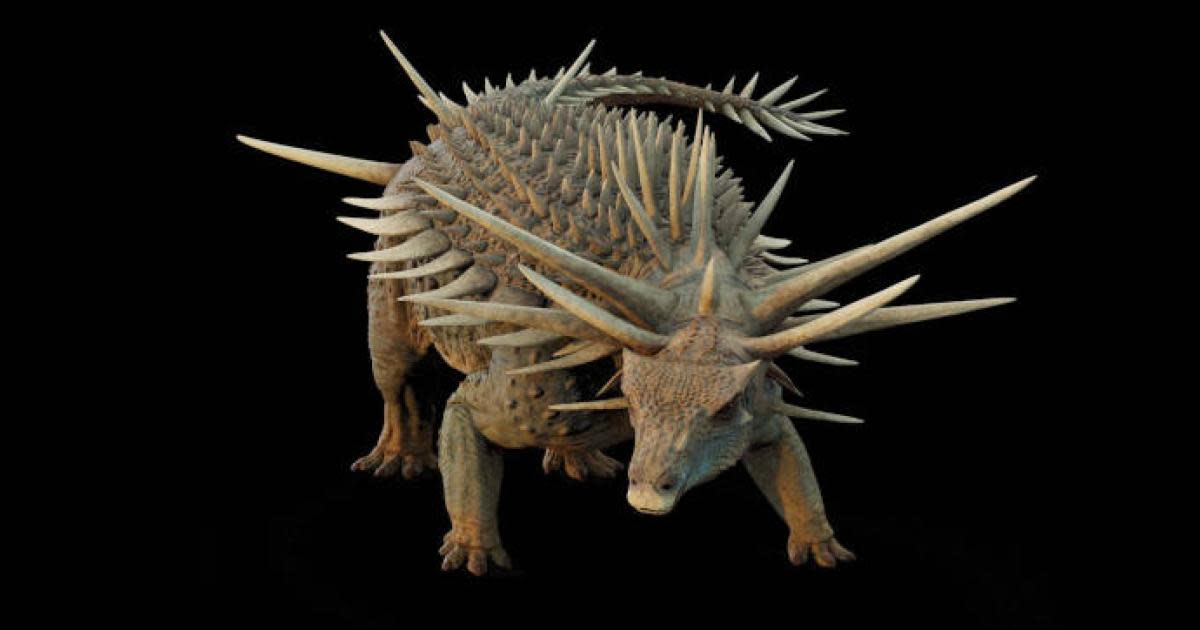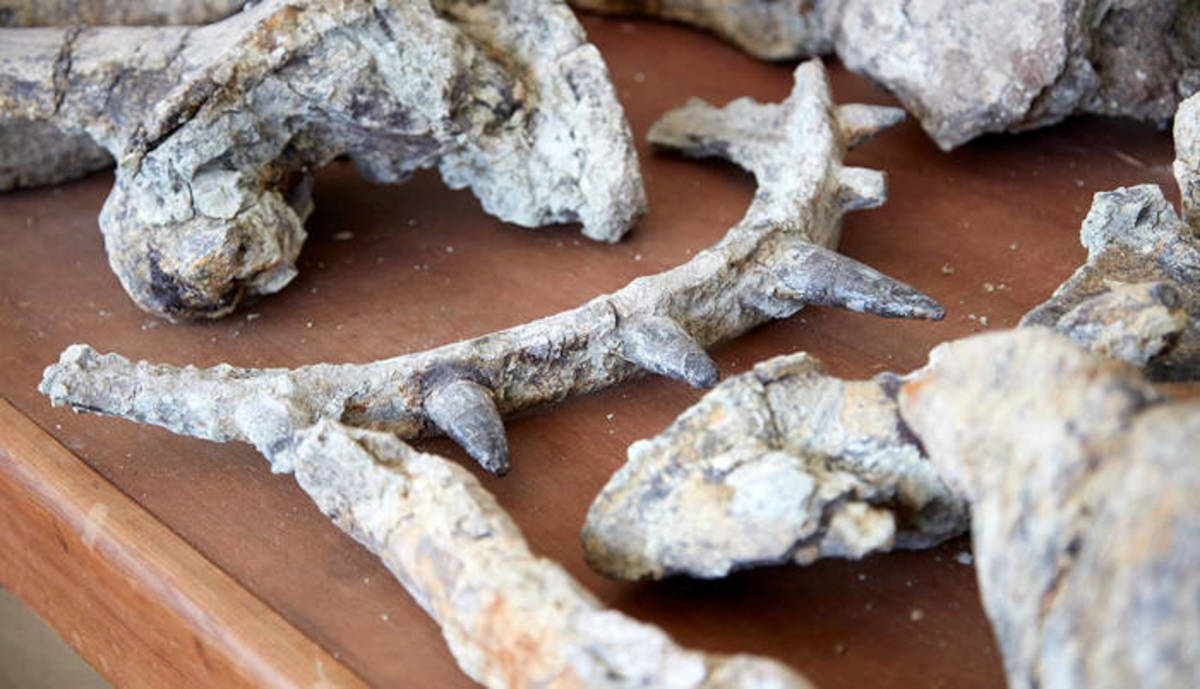Researchers have discovered the world’s oldest armored dinosaur, according to a new study published in the journal Nature, which features the most extensive body armor ever found on a vertebrate, living or extinct.
Diverse Features Earned Its ‘Punk-Rock’ Nickname
© The Trustees of the Natural History Museum, London
Dubbed a “punk-rock” dinosaur by researchers, the species, known as Spicomellus afer, is the earliest-known member of the ankylosaur family of dinos, which predated the Ankylosaurus family by almost 100 million years. This discovery is especially notable because, up until now, the earliest of the so-called “armored” dinosaurs were believed to have rocked fairly simple defensive features. However, this new discovery shows that even the earliest armored dinosaurs were equipped with a protective shield that rivaled that of later species.
The real punk-rock flourish was the dino’s collar, a bony construction featuring 34-inch spikes in a circular formation around its neck, not dissimilar to a neckpiece worn by Sid Vicious of the Sex Pistols. Richard Butler, of England’s University of Birmingham, called the specimen the “punk rocker” of its time, perhaps the very first known to man (or animals). Astonishing photos of the recovered armor show just how punk this dino was.
© The Trustees of the Natural History Museum, London
Armor Had a Romantic, Rather than Violent, Purpose
Researchers believed that the traits exhibited on Spicomellus did not spring up until far later down the evolutionary chain, challenging the previously thought timeline for how these magnificent creatures developed. Scientists posit that, more than armor, the outer shell served as a display of sexuality and attraction, “used for some kind of display” towards hopeful mates rather than a deterrent for predators. “Morocco has a strong background in classical geology, but discoveries like this show the importance of palaeontology as well,” said Driss Ouarhache, of the Université Sidi Mohamed Ben Abdellah.
© The Trustees of the Natural History Museum, London
